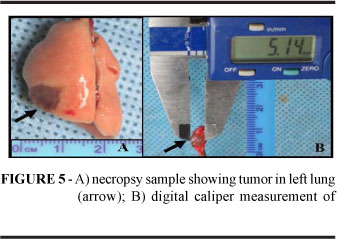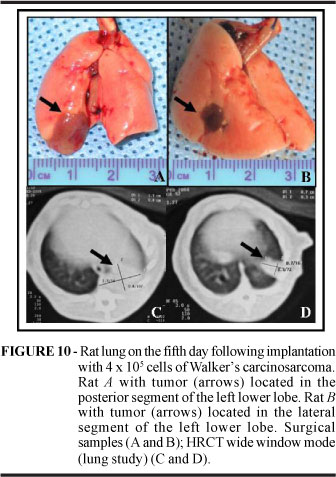PURPOSE: The objective of this study was to develop a rat lung tumor model for anticancer drug testing. METHODS: Sixty-two female Wistar rats weighing 208 ± 20 g were anesthetized intraperitoneally with 2.5% tribromoethanol (1 ml/100 g live weight), tracheotomized and intubated with an ultrafine catheter for inoculation with Walker's tumor cells. In the first step of the experiment, a technique was established for intrabronchial implantation of 10(5) to 5×10(5) tumor cells, and the tumor take rate was determined. The second stage consisted of determining tumor volume, correlating findings from high-resolution computed tomography (HRCT) with findings from necropsia and determining time of survival. RESULTS: The tumor take rate was 94.7% for implants with 4×10(5) tumor cells, HRCT and necropsia findings matched closely (r=0.953; p<0.0001), the median time of survival was 11 days, and surgical mortality was 4.8%. CONCLUSION: The present rat lung tumor model was shown to be feasible: the take rate was high, surgical mortality was negligible and the procedure was simple to perform and easily reproduced. HRCT was found to be a highly accurate tool for tumor diagnosis, localization and measurement and may be recommended for monitoring tumor growth in this model.
Lung neoplasms; Walker-256 carcinoma; rats















